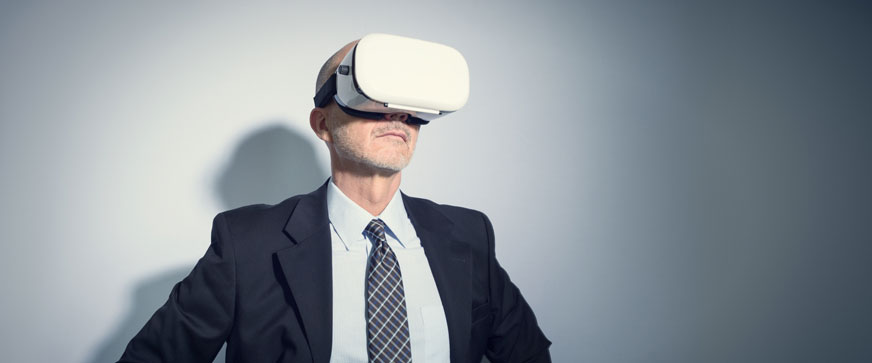 Any media which can absorb you totally can be described as immersive. Absorption in a book, video or game can transport you into a place and character. However, the latest tech does this so completely as to deceive your senses. This immersion is increasingly influential on business and society.
Any media which can absorb you totally can be described as immersive. Absorption in a book, video or game can transport you into a place and character. However, the latest tech does this so completely as to deceive your senses. This immersion is increasingly influential on business and society.
The continual expansion of computing power has resulted in a geometrically increased capability and sophistication of virtual worlds. Driven by gaming engines (Unity and Unreal Engine) and a massive global dedication of developers to scope and detail, 360° virtual reality (VR) has impacted movie and video production from smartphone graphics to motor-racing simulators and global blockbuster movies. The availability of head-mounted displays and vibration responsive seats has enabled a sensory environment which is all enveloping.
"Ready, Player One" (2011) the book by Ernest Cline (and subsequent movie) is the latest in a long line of science fiction creations which offer real-time dreams via technology. Some may view the dystopian future that it conveys as neither unrealistic nor far-distant.
The existence of the voluntarily withdrawn 'Hikikomori' in Tokyo creates concerns for parents and sociologists alike. The massive number of full-time gamers in Seoul has prompted Korean government actions like the "Cinderella law" online lockout for underage players and rehab for addicts. While the time commitment may be similar, top professional gamers benefit from competition-driven wealth and nationwide popularity.
It not just sci-fi. It's right here and now.
Real-world applications of immersive technology
While gaming is driving this technology, commercial brands are benefiting from the real-world applications. The most obvious is the building, construction and engineering sector, which for years has utilised the hyper-realism of computer graphic imaging (CGI) to demonstrate a future built environment, before ground has even been broken.
To architects, it is incredibly valuable to plot shadows cast by a building, or the incidence of the sun on its windows throughout the year. To developers and property buyers, it is a massive advantage to see interior and exterior vistas.
Salespeople have long understood that once the prospect has imagined themselves in the experience or using the product, the sale is practically confirmed. Once you 'feel' the place or product, you are ready to own it!
In the very near future, I expect that travel agents will use VR head-mounted displays to enable a traveller to dive into an immersive experience to decide on a hotel room, resort or scuba dive, while still in the travel agency.
Apps can accurately measure the dimensions of your dining room then change the carpet for floorboards of whatever timber you choose. A recently released app can 'clone' a piece of your own furniture and then position it anywhere in your home, all without lifting anything heavier than your smartphone!
In clothing stores, large digital screens now operate as 'magic mirrors', using augmented reality (AR) to reflect your image and change the colour of the jacket you are wearing from dark blue to charcoal grey in an instant.
Public posters have long been replaced by digital screens on bus shelters and high traffic areas. These digital panels are interactive and can be programmed to respond via a QR code, Bluetooth or near-field communications (NFC) to display messages relevant to you. The environment of "Minority Report" (2002) has arrived!
Irrespective of whether a brand is selling sunshine, shoes or skyscrapers, the benefits of immersive environments are considerable.
To explore how your business can capitalise on immersive technologies, connect with a marketing consultant who understands the nexus of technology and the power of human emotion in achieving sales.
photo credit: amesy / Getty Images